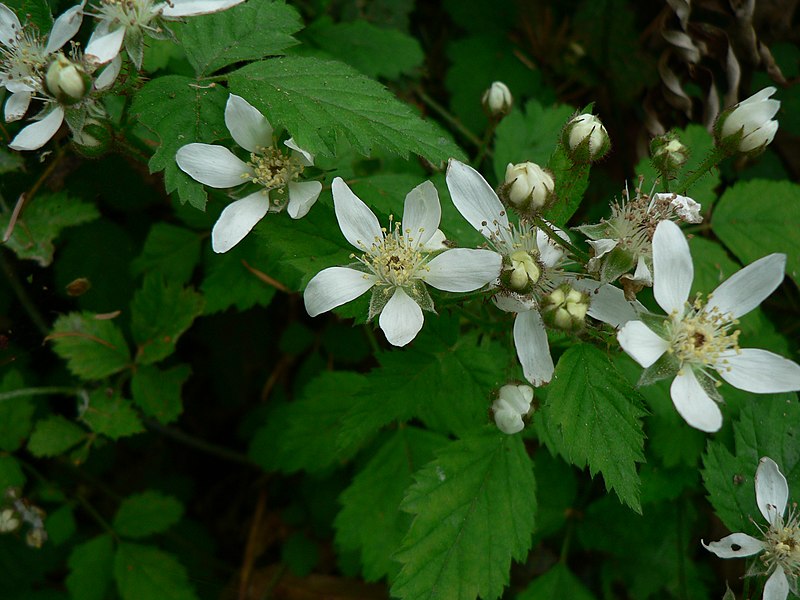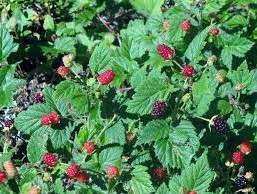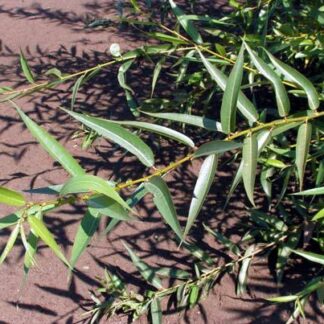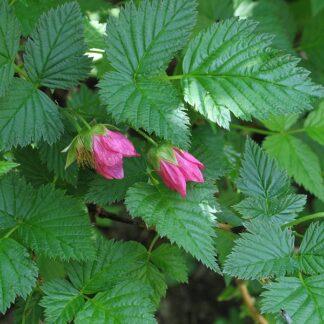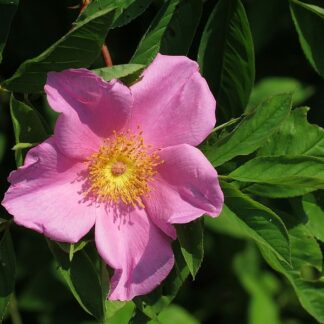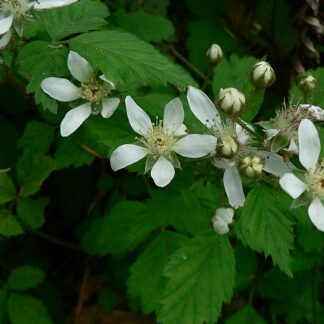Description
Sold as bundles of 10.
At a Glance: Trailing blackberry is a native perennial, low trailing vine. Its trailing or climbing stem is armed with tiny, slender, hooked spines. This species produces male and female flowers borne on separate plants that are white or pink with elongated petals. Both flowers are five petaled. Trailing blackberry produces edible berries in open, sunny areas from April to August.
Leaves: The leaves of trailing blackberry are deciduous, alternate in leaf arrangement, and composed of three leaflets. The leaflets are 3-7 cm long, the terminal leaflet 3-lobed. Leaf margins are sharply toothed and the stems and veins are prickly; stipules various but usually slender or joined to the leaf stalks. The color of the leaves are dark green above, with a pale white-green underneath.
Flowers: Trailing blackberry produces large white or pink flowers ( to 4 cm across ); in flat-topped purplish-hued clusters from the leaf axis; male and female flowers are separate plants. The female flowers have distinct rudimentary stamens, the male with small, non-functional ovaries. Blooming time is April through August.
Fruit: Trailing blackberry produces a hanging berry that is up to 1 cm long. The blackberry is composed of an aggregation of drupes. The color of the berries are deep red to shiny black. The fruits are of same general shape and character as loganberries and boysenberries, but smaller in size. The fruits are edible, sweet, juicy, and fleshy.
Helpful Tips: Does well in disturbed areas.
Ethnobotany: The vines of trailing blackberry were used by the Saanish People of Vancouver Island to place over and under food in steam cooking pits, and also for ritual scrubbing. They and other Coast Salish Tribes sometimes used the fruits as a purple stain. The berries were eaten fresh, or mashed and dried in cakes, by the Straits Salish, Halkomelen, Squamish, Sechelt, Comex, Nootka, and South Kwakiutt. Other Indigenous uses include: using the leaves and roots to treat diarrhea, dysentery, cholera, excessive menstruation, fever, and sores in the mouth. The leaves of this species also were used as a substitution for tea during the Colonial Tea Boycott. Currently, teas made from this species are recommended by herbalists as a diuretic and mild astringent. In addition, the seeds of drupes all contain Cyanogenic Glycosides. The leaves of Cyanogenic plants were boiled and used as a bitter tonic and astringent, and presently is an ingredient in an assortment of Patent medicines.
Growing Conditions:
| Sun/Shade Tolerance | Hydrology | Elevation Range |
| full sun > 80% | dry | low elevation |
| mostly sunny 60-80% | moist | mid elevation |
| partial sun and shade 40% – 60% |
Reference: http://web.pdx.edu/~maserj/ESR410/rubisursinus.html

